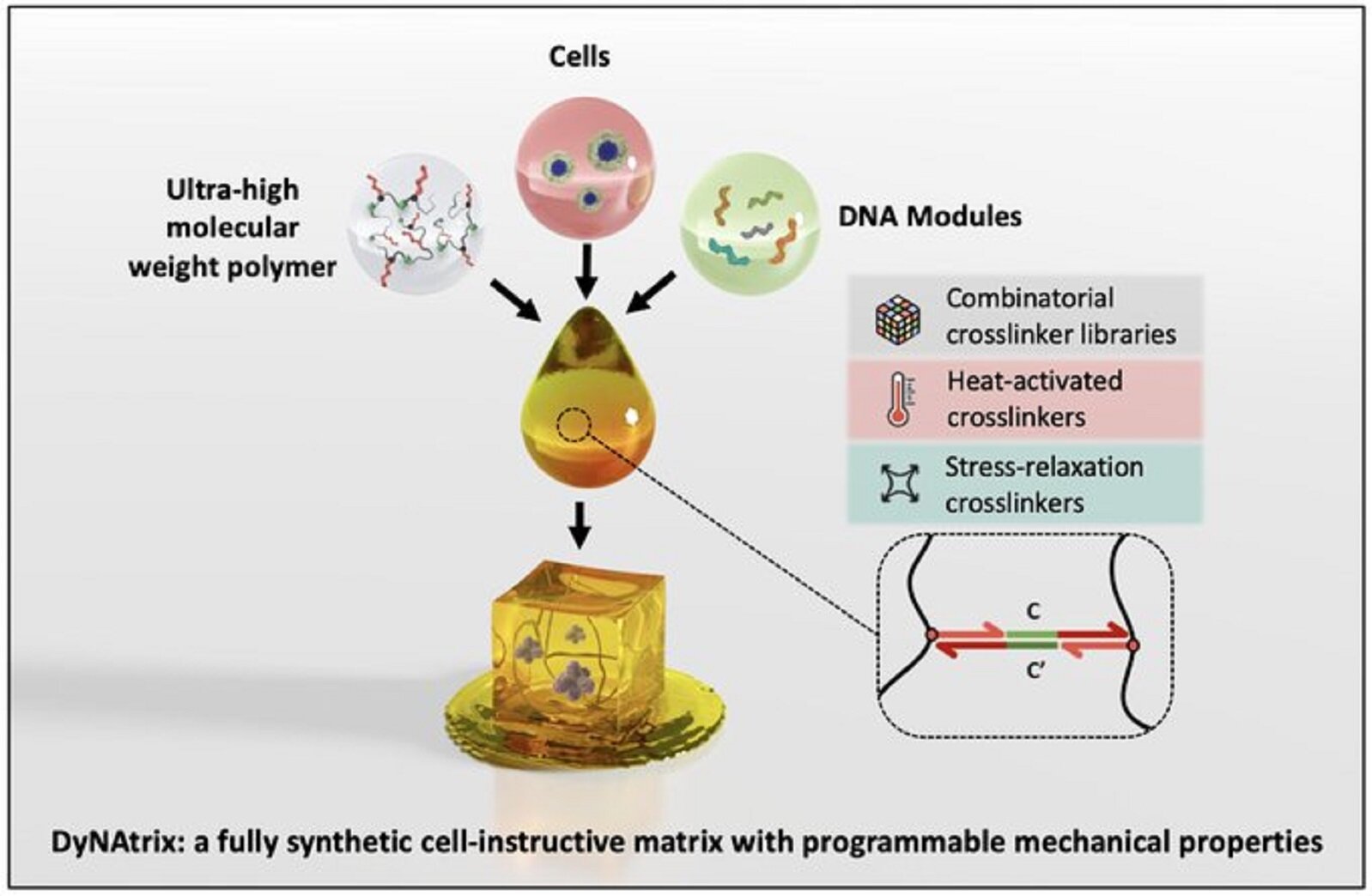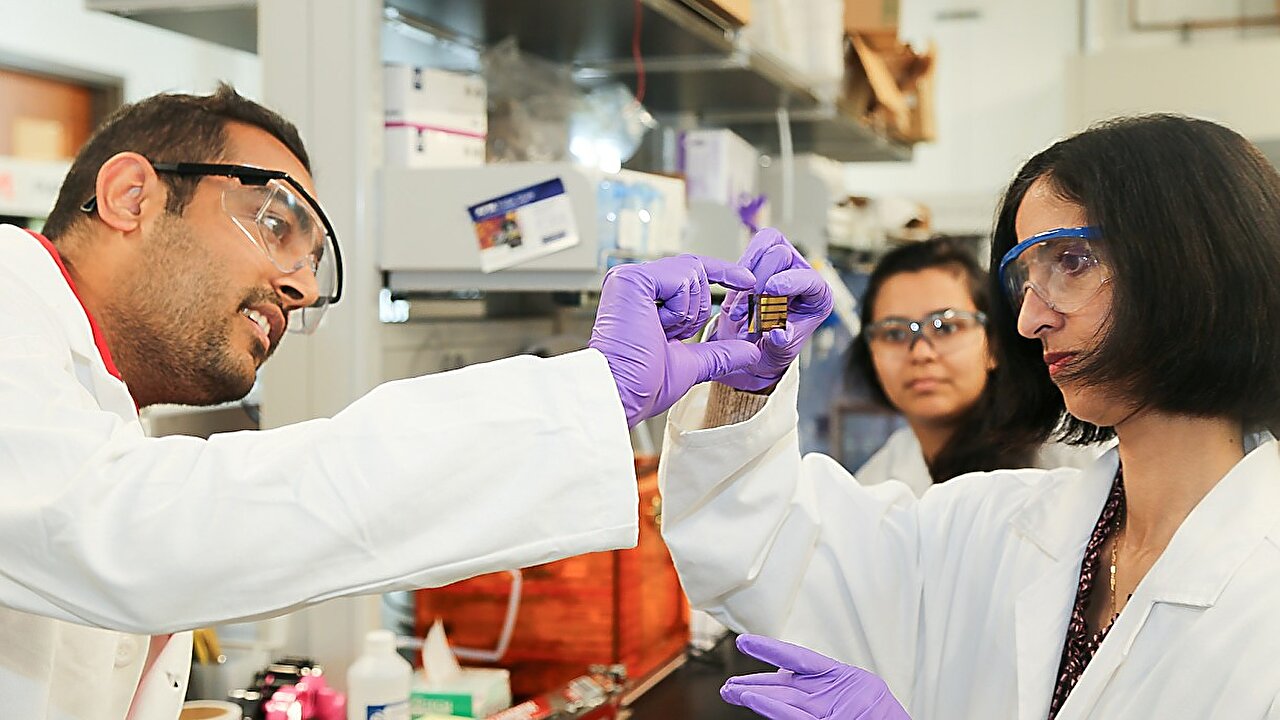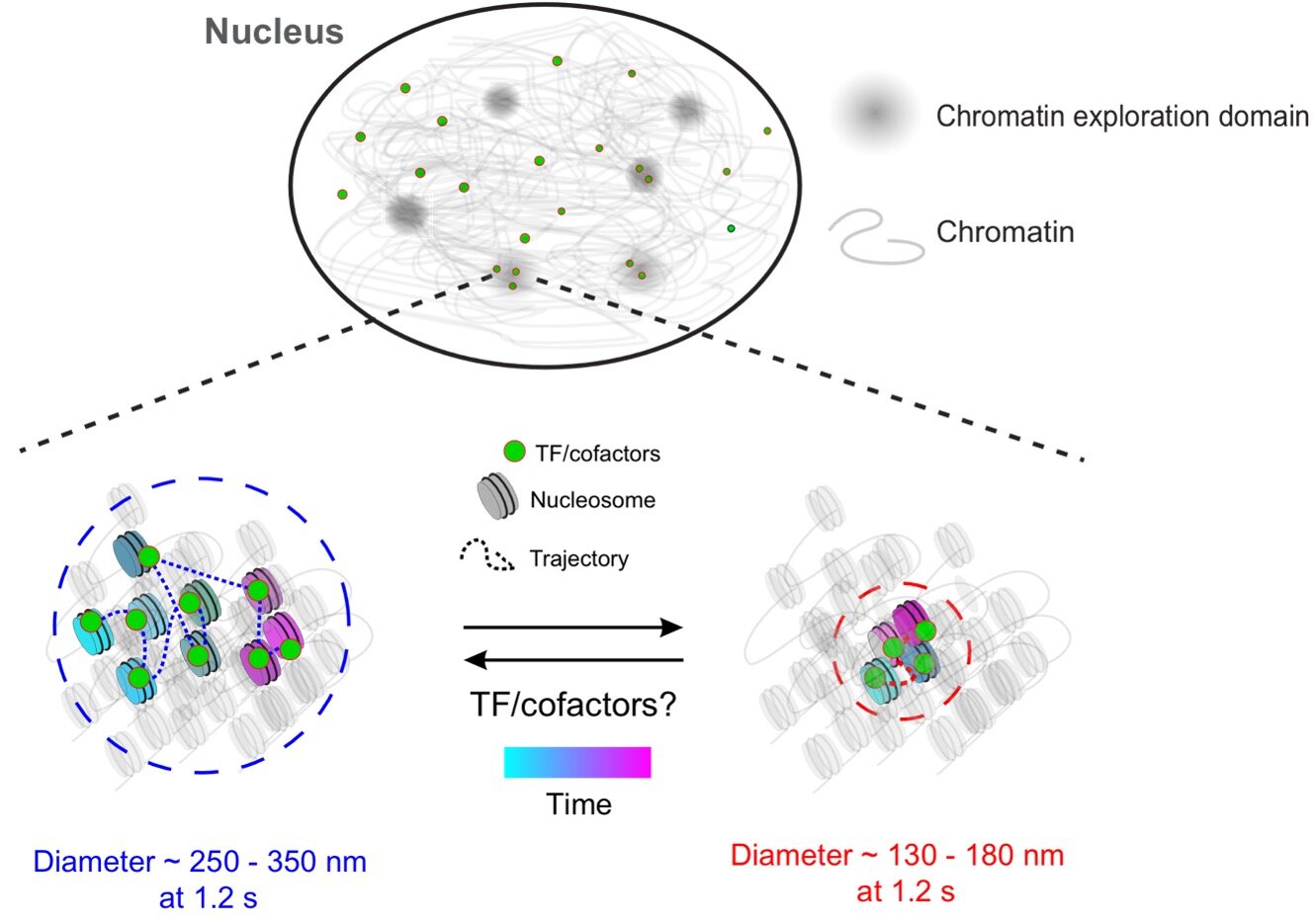Biological research relies heavily on in-vitro cell culture, but current materials have significant limitations. Many are derived from animals, resulting in poor reproducibility and limited control over their mechanical properties. This calls for new approaches to create soft and biocompatible materials with predictable characteristics.
Dr. Elisha Krieg and their team at the Leibniz Institute of Polymer Research Dresden have developed a groundbreaking material called DyNAtrix. By combining synthetic polymers with programmable DNA crosslinkers, they have created a dynamic DNA-crosslinked matrix. The specific binding properties of DNA allow researchers to have unprecedented control over the material’s mechanical properties.
Published in Nature Nanotechnology on August 7, their research demonstrates how DyNAtrix enables precise control over its viscoelastic, thermodynamic, and kinetic characteristics. By simply altering the DNA sequence, researchers can tune the stress-relaxation properties of the material to mimic those found in living tissues.
DyNAtrix is not only self-healing and printable, but it also exhibits high stability and controllable degradation. The material has shown excellent biocompatibility in cell culture experiments with various cell types, including human mesenchymal stromal cells, pluripotent stem cells, canine kidney cysts, and human trophoblast organoids.
The programmable properties of DyNAtrix hold great promise for applications in tissue culture. Ongoing studies are investigating the impact of its viscoelastic properties on cell and organoid development. In the future, DyNAtrix could revolutionize basic research and personalized medicine by allowing the reproduction and investigation of patient-derived tissue models in the laboratory.








